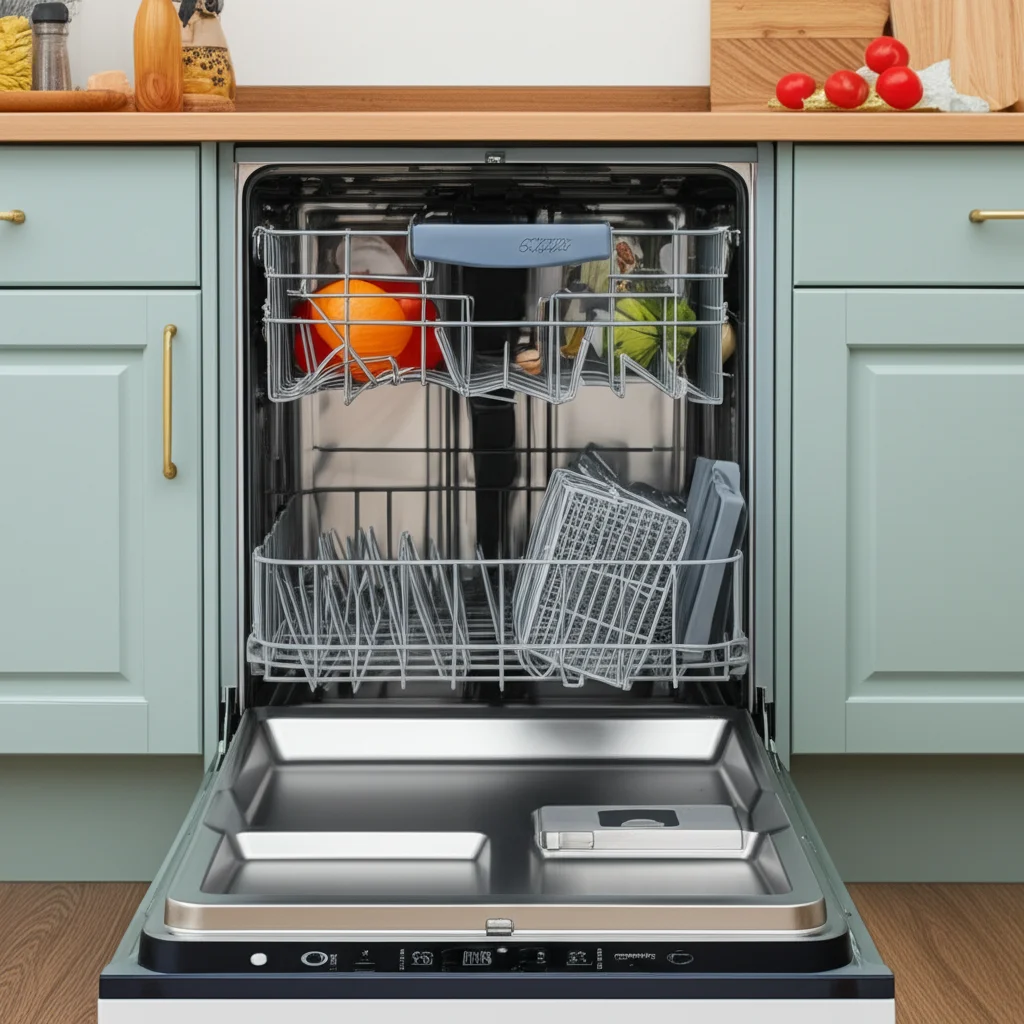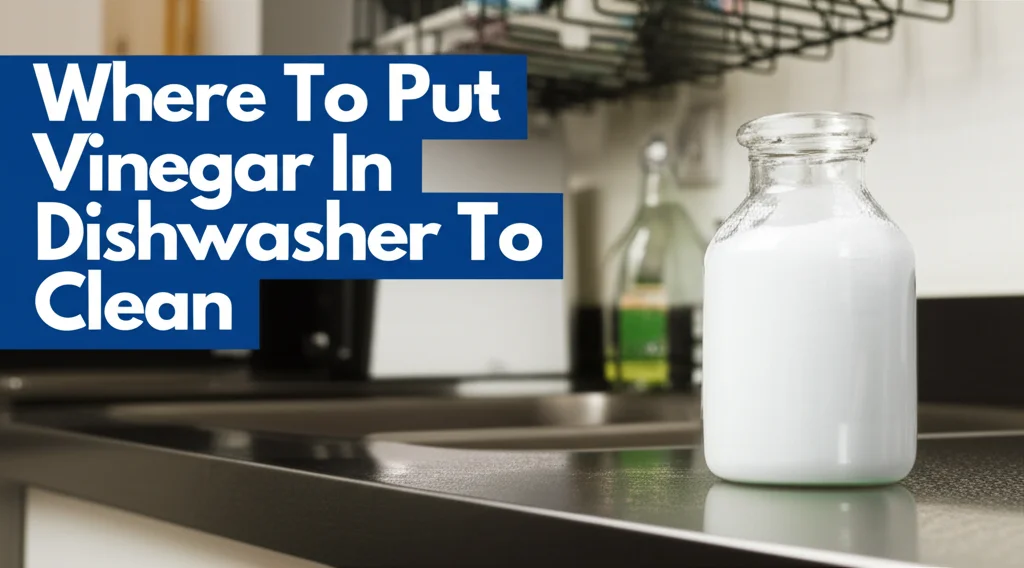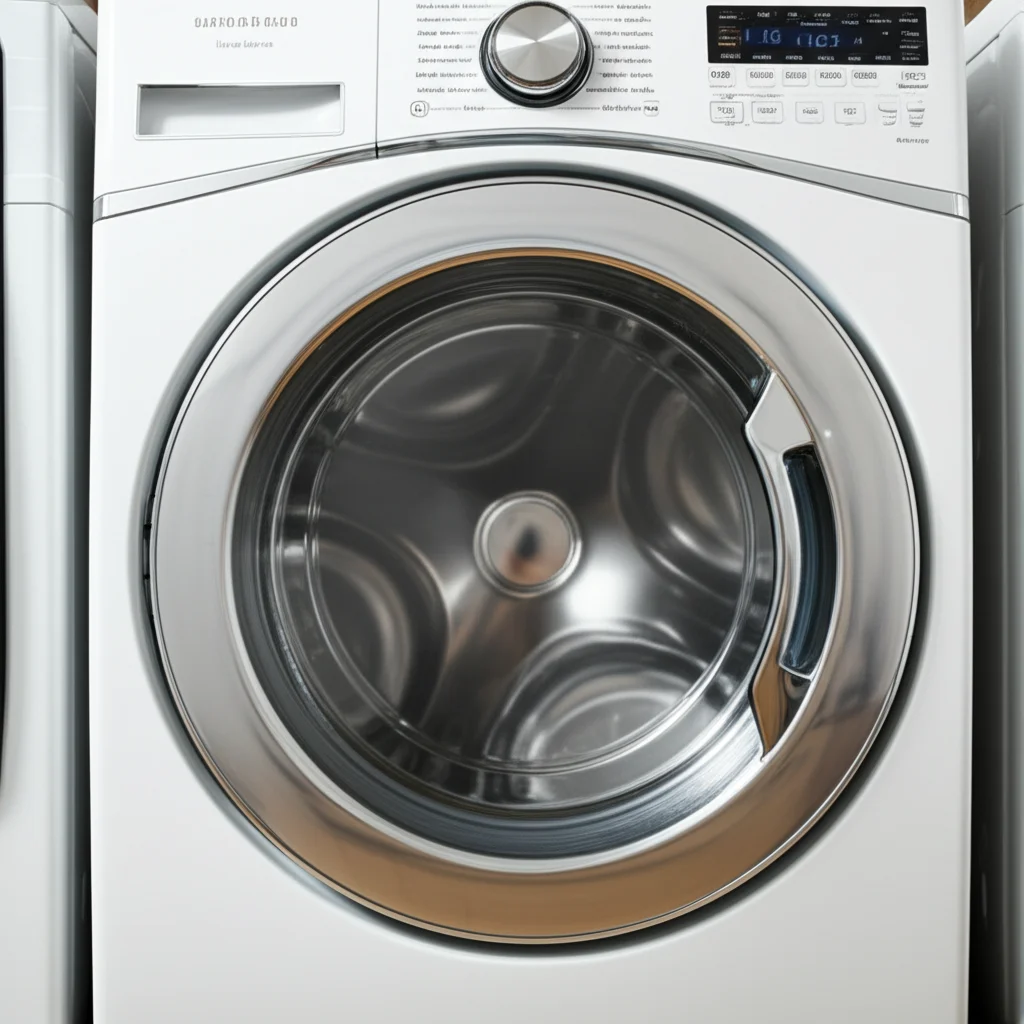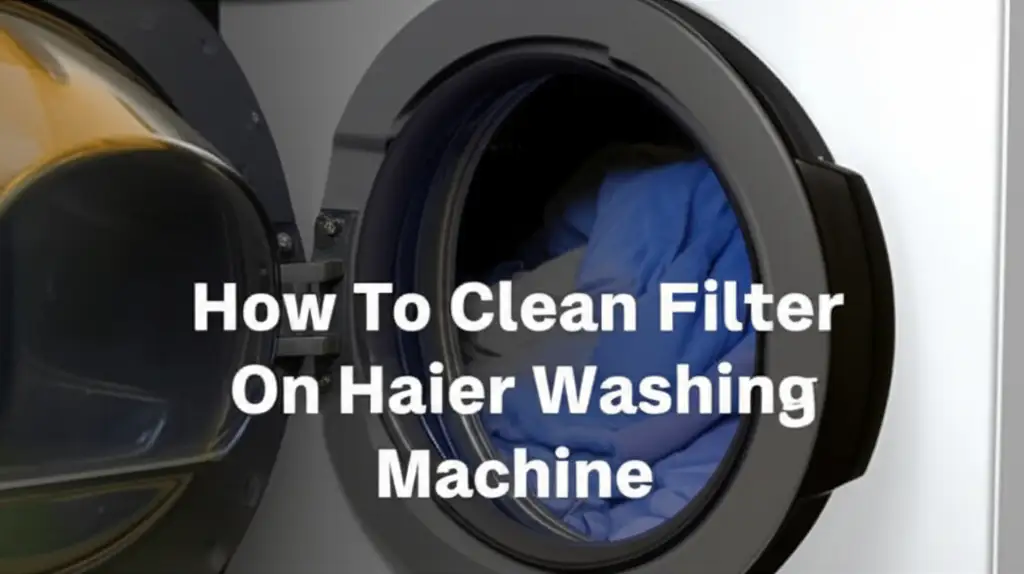· Todd Martin · Appliance Maintenance · 13 min read
How To Clean Whirlpool Oven Aqualift Self Clean
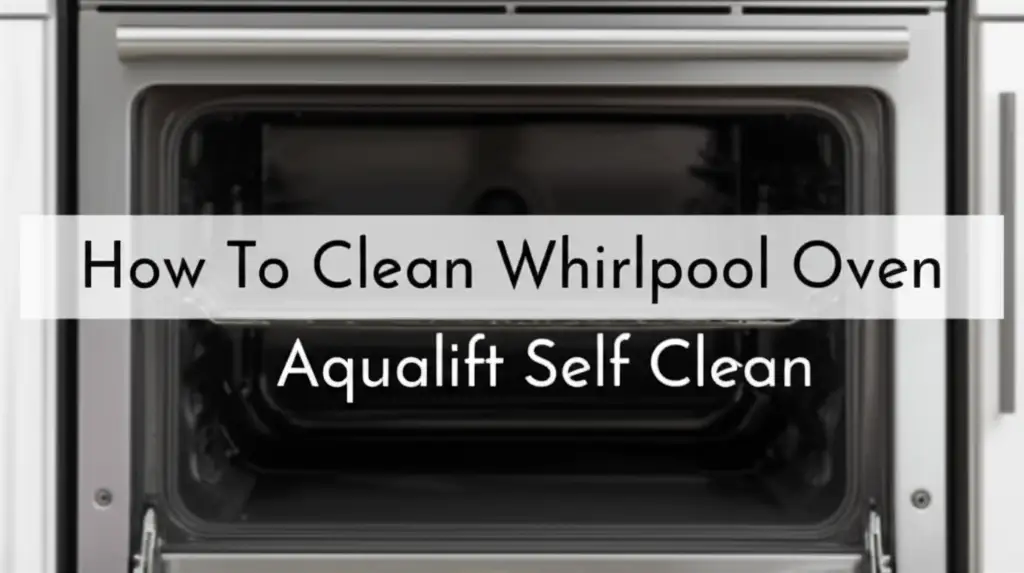
Sparkling Clean: Cleaning Your Whirlpool Oven with AquaLift
Cleaning the oven can feel like a daunting task. Baked-on spills and stubborn grease make it seem impossible to get truly clean. However, if you own a Whirlpool oven with AquaLift Self-Clean technology, you have a powerful tool at your disposal. This innovative feature uses water and low heat to loosen messes, making cleanup much easier.
I remember my first time using AquaLift; I was skeptical. But with the right approach, it truly transforms a grimy oven into a much cleaner space. This guide will walk you through each step. We will cover preparing your oven, running the AquaLift cycle, and effectively finishing the job. You will learn how to clean your Whirlpool oven AquaLift self-clean effectively. We also address common issues and provide tips for ongoing maintenance.
Takeaway
- Prepare Thoroughly: Remove all racks and large debris before starting the AquaLift cycle.
- Use Distilled Water: Pour the correct amount of distilled water into the oven bottom.
- Run the Cycle: Activate the AquaLift Self-Clean feature as per your oven’s instructions.
- Wipe Away Residue: After the cycle cools, easily wipe away softened food soils.
- Maintain Regularly: Clean spills promptly to reduce the need for deep cleaning.
To clean your Whirlpool oven with AquaLift Self-Clean, first remove all racks and loose debris. Then, pour 2 cups of distilled water onto the oven bottom. Activate the AquaLift cycle on your oven’s control panel. Once complete and cooled, easily wipe away the softened residue with a sponge.
Understanding Whirlpool AquaLift Self-Clean Technology
Many people wonder what makes AquaLift different from traditional self-cleaning ovens. Whirlpool’s AquaLift Self-Clean technology offers a unique approach to oven cleaning. It uses water and a lower temperature setting compared to conventional high-heat self-clean cycles. This method avoids the extreme heat often associated with older self-cleaning ovens.
Traditional self-clean cycles heat the oven to very high temperatures, around 800-900°F (427-482°C). This process burns food residue into ash. While effective, it generates smoke and strong odors. It also takes several hours to complete. My old oven used this method, and the heat was always a concern. You can learn more about how hot an electric oven gets when self-cleaning if you are curious.
AquaLift operates at a much lower temperature, usually below 250°F (121°C). It combines this low heat with water poured into the oven cavity. The water turns into steam, which helps loosen baked-on food. This gentle method produces less smoke and fewer odors. It also takes less time, typically under an hour. This makes AquaLift a more convenient and environmentally friendly option for many users. The goal is to soften the grime, not burn it away completely. This distinction is crucial for understanding how to clean your Whirlpool oven AquaLift self-clean effectively.
Preparing Your Whirlpool AquaLift Oven for Cleaning
Proper preparation is key to a successful AquaLift cleaning cycle. You cannot just press a button and expect magic. A little effort beforehand makes a big difference in the final result. I always start by gathering my supplies, which makes the whole process smoother.
First, ensure your oven is completely cool. Never attempt to clean a hot oven. Next, remove all oven racks, rack guides, and any other accessories from inside the oven. These items are not designed to go through the AquaLift cycle. Placing them in the oven during the cycle can damage them or interfere with the cleaning process. Set them aside for manual cleaning later if they are dirty. You may want to consider how to clean your Whirlpool oven without self-clean for the racks.
After removing accessories, it is time to tackle loose debris. Use a damp cloth, sponge, or rubber spatula to remove any large food particles or loose spills from the oven bottom. Bits of food, crumbs, or chunks of baked-on residue will not magically disappear with AquaLift. They need a physical removal before the cycle starts. If left in place, these large pieces can hinder the steam’s ability to reach and soften the stuck-on grime underneath. A quick sweep or wipe-down will significantly improve the AquaLift system’s effectiveness. This pre-cleaning step prevents clogs and ensures better overall results.
Running the AquaLift Self-Clean Cycle
Once your oven is prepared, running the AquaLift cycle is straightforward. This part of the process is simple and requires minimal effort from you. I always check my oven’s specific manual for precise instructions, but the general steps are quite consistent across Whirlpool models.
First, locate the “AquaLift Self-Clean” button or option on your oven’s control panel. Sometimes it is labeled “Clean” or “Steam Clean.” Consult your owner’s manual if you cannot find it immediately. This button initiates the cleaning process. Next, you need to add water to the oven cavity. It is crucial to use distilled or filtered water. Hard tap water can leave mineral deposits that are difficult to remove. Measure out exactly 2 cups (approximately 473 ml) of water. Pour this water directly onto the bottom surface of the oven. Do not pour it into any vents or openings. The water should spread evenly across the oven floor.
With the water in place, close the oven door completely. Then, press the “AquaLift Self-Clean” button or select the cleaning cycle on your control panel. The oven will begin heating to a low temperature, typically around 200-250°F (93-121°C). This process generates steam from the water you added. The steam works to loosen and soften the baked-on food residue. The cycle usually takes less than an hour, often around 40-50 minutes. Your oven display will show the progress. You might notice some steam escaping, which is normal. Avoid opening the oven door during the cycle to keep the steam contained. If you need to stop it for any reason, some Whirlpool ovens allow you to stop the cycle. Once the cycle finishes, the oven will beep and turn off.
Post-Cycle Cleanup: Wiping Away the Residue
The AquaLift cycle does not burn away food like traditional self-clean features. Instead, it softens the residue. This means you have an important step to complete after the cycle finishes. This is where your effort truly pays off in seeing a clean oven. I find this part surprisingly satisfying because the grime comes off so easily.
After the AquaLift cycle completes, let the oven cool down completely. This usually takes another 30-60 minutes. Do not open the door immediately; the steam inside is still working, and the surfaces can be warm. Once the oven is cool to the touch, you can begin the cleanup. Open the oven door and gather your cleaning tools. You will need a soft cloth or sponge, a non-abrasive scrubber (like a nylon brush), and a small amount of mild dish soap or a specialized oven cleaner designed for AquaLift systems. Whirlpool often recommends simple dish soap and water.
Dip your cloth or sponge into warm, soapy water. Start wiping the interior surfaces of the oven. You will notice that the baked-on food spatters and grease have softened significantly. They should come off with minimal scrubbing. For more stubborn spots, apply a little more pressure or use your non-abrasive scrubber. Avoid using harsh chemical oven cleaners or abrasive pads, as these can damage the AquaLift coating. These coatings are delicate. Make sure to wipe down the oven door, sides, and the bottom where the water was. Rinse your cloth frequently to avoid spreading dirt. Once all the softened residue is removed, wipe the oven interior with a clean, damp cloth to remove any soap residue. Finish by drying the surfaces with a dry cloth. For more general advice on post-cleaning, consider reading how to clean an oven after self-clean.
Troubleshooting Common AquaLift Cleaning Issues
Sometimes, the AquaLift cycle might not achieve the level of cleanliness you expect. This can be frustrating, but most issues have simple solutions. I have encountered a few of these myself, and a little adjustment usually fixes them. Understanding why your Whirlpool oven is not self-cleaning effectively is the first step.
One common issue is leftover residue after the cycle. This often happens if there was too much initial grime. AquaLift is best for light to moderate soil. If your oven has heavy, baked-on grease or large spills, it might require more than one AquaLift cycle. You can repeat the process: re-add 2 cups of distilled water and run the cycle again. For extremely stubborn spots, you might need to pre-scrape some of the thickest buildup before running the cycle again. Another factor is the type of water used. Using tap water instead of distilled water can leave mineral streaks or white residue. Always use distilled water for the best results.
Another problem can be related to the oven door seal. If the door is not sealing properly, steam can escape, reducing the AquaLift’s effectiveness. Check the door gasket for any tears or damage. If the gasket is compromised, it might need replacement. Also, ensure the oven door is fully closed and latched before starting the cycle. Sometimes, users forget to clean out large debris before starting the cycle. This can prevent the steam from reaching all areas. Always perform the pre-cleaning steps thoroughly. If you encounter persistent issues, consult your Whirlpool oven’s user manual for specific troubleshooting tips or contact Whirlpool customer support. They can provide model-specific advice.
Maintaining Your Whirlpool Oven Between AquaLift Cycles
Regular maintenance helps keep your Whirlpool oven cleaner for longer. This reduces the need for frequent deep cleaning with AquaLift. Small actions performed consistently make a big difference. I always try to do a quick wipe-down after cooking messy meals.
One of the most effective maintenance habits is wiping up spills immediately. As soon as a spill occurs, and the oven has cooled down, use a damp cloth to clean it. Fresh spills are much easier to remove than baked-on ones. If a spill bakes onto the surface, it becomes a much harder task for AquaLift. For tougher fresh spills, a bit of mild dish soap can help. You can also use a mixture of baking soda and water to create a paste for gentle scrubbing. Apply the paste to the spill, let it sit for 15-20 minutes, then wipe it away.
Periodically, even without a major spill, give your oven a quick wipe-down. Use a damp cloth to clean the interior surfaces every few weeks, especially the bottom and lower sides. This prevents light grease buildup from becoming heavy grime. Regularly clean the oven door, both inside and out. Food splatters can accumulate on the inner glass, making it harder to see inside. For the glass, a mixture of vinegar and water or a specialized glass cleaner can work wonders. Remember to also clean your oven racks manually. They do not go through the AquaLift cycle. A good soak in hot, soapy water usually gets them clean. Consistent small efforts mean less work when you finally need to run the AquaLift cycle. This helps you maintain a clean Whirlpool oven with AquaLift self-clean technology more efficiently.
AquaLift vs. Traditional Self-Clean: Key Differences
Understanding the differences between AquaLift and traditional self-clean cycles helps users appreciate Whirlpool’s technology. These two cleaning methods approach the problem of a dirty oven in fundamentally different ways. This comparison is important for managing expectations and proper use.
Traditional self-cleaning ovens rely on extremely high temperatures. The oven heats to over 800°F (427°C). At these temperatures, food residue turns into ash. This process is very effective at breaking down grime. However, it comes with several drawbacks. The high heat consumes a lot of energy. It also generates significant smoke and strong odors, requiring good ventilation. The cycle takes a long time, often 3-5 hours, plus cool-down time. Furthermore, the intense heat can stress oven components, potentially reducing their lifespan.
AquaLift, in contrast, uses a combination of water and lower heat. It operates at temperatures below 250°F (121°C). Water poured onto the oven floor creates steam, which softens the baked-on food. This method is gentler on the oven and the environment. It produces minimal smoke and odors, making it more comfortable to use indoors. The cycle duration is much shorter, typically around 40-50 minutes. While it effectively loosens grime, it requires a manual wipe-down afterward to remove the softened residue. Traditional self-clean turns grime into ash, which you vacuum or wipe away. AquaLift softens grime so you can easily wipe it away. Each method has its pros and cons, but AquaLift offers a faster, less intense cleaning experience. If you are curious about how long a Whirlpool oven self-clean takes, you will find AquaLift is significantly quicker.
FAQ Section
How often should I use the AquaLift Self-Clean feature?
The frequency depends on your cooking habits. For light to moderate oven use, running the AquaLift cycle every 1-3 months is often sufficient. If you cook frequently or prepare messy dishes, you might need to use it more often, perhaps once a month. Regular spot cleaning between cycles reduces the need for frequent full cleanings.
Can I use oven cleaners with AquaLift technology?
No, you should not use chemical oven cleaners with your Whirlpool AquaLift oven. These harsh chemicals can damage the special non-stick AquaLift coating on the oven interior. Always use only water for the AquaLift cycle. For post-cycle cleanup, use a soft cloth with mild dish soap and water.
Why is my oven still dirty after an AquaLift cycle?
AquaLift softens grime; it does not burn it away. If your oven is still dirty, you likely need to wipe away the softened residue more thoroughly. For very heavy, baked-on grime, one cycle might not be enough. You may need to run the AquaLift cycle a second time or pre-scrape larger messes before starting the cycle. Ensure you used the correct amount of distilled water.
How long does the AquaLift Self-Clean cycle take?
The AquaLift Self-Clean cycle typically takes about 40 to 50 minutes to complete. This is significantly shorter than traditional high-heat self-clean cycles. After the cycle finishes, you must allow additional time for the oven to cool down before you can safely wipe away the softened residue.
What kind of water should I use for AquaLift?
Always use distilled or filtered water for the AquaLift Self-Clean cycle. Tap water contains minerals that can leave white streaks or deposits on the oven interior once the water evaporates. Distilled water prevents these mineral stains, ensuring a cleaner finish after the cycle.
Can I open the oven door during the AquaLift cycle?
It is best to avoid opening the oven door during the AquaLift cycle. Keeping the door closed helps maintain the internal temperature and traps the steam, which is essential for softening the baked-on food. Opening the door releases the steam and reduces the cleaning effectiveness of the cycle.
Conclusion
Cleaning your Whirlpool oven with AquaLift Self-Clean technology does not have to be a dreaded chore. By following these straightforward steps, you can achieve a significantly cleaner oven with minimal effort. We covered everything from preparing your oven and running the gentle AquaLift cycle to efficiently wiping away the softened grime. Remember to use distilled water and remove large debris beforehand for the best results.
AquaLift offers a faster, safer, and more environmentally friendly alternative to traditional high-heat self-cleaning methods. It softens stubborn food messes, making post-cycle cleanup simple. Embrace these tips for ongoing maintenance, and your Whirlpool oven will remain sparkling. Keep your kitchen chores light and your oven ready for its next culinary adventure. Try these steps today and enjoy a fresher, cleaner cooking space!


